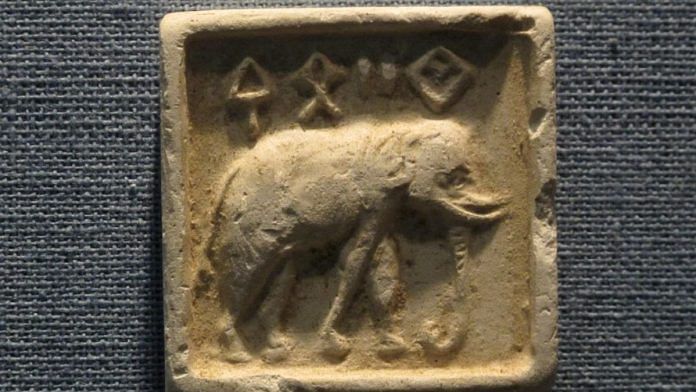New Delhi: Five months after Tamil Nadu Chief Minister MK Stalin announced a million-dollar prize for anyone who could decode the enigmatic Indus Valley script, the Archaeological Survey of India has called for research papers on the topic.
It’s one of ancient Indian history’s enduring puzzles.
The Archaeological Survey of India (ASI) will now host a three-day-long international conference on cracking the Indus script in August. Its title: Decipherment of Indus Script: Current status and Way Forward.
“The aim of the seminar is to provide a platform for all those who are invested in deciphering the script and to showcase the current stage of their individual studies and claims,” Professor Alok Tripathi, additional director general of ASI, shared the details of the event with ThePrint.
ASI collaborated with the Ministry of Culture, and the event will be held from 20 August to 22 August at the Pandit Deendayal Upadhyaya Institute of Archaeology, Greater Noida.
Scholars, researchers, and any individual who, by their own volition, are relentlessly in pursuit of unravelling the enigma that is the Indus script are invited to the event.
The seminar will take place mainly through presentations, both offline and online.
“Thematic sessions shall be designed based on the current stage of research in this field. It is expected that the papers will be submitted prior to the date of the seminar,” reads the ASI statement, adding that the proceedings of the seminar are anticipated to highlight the scope and quantum of current and future research in the field.
Also read: 1857 rebels marched to Delhi with a plan—not a spontaneous ‘chalo maro’, says Sohail Hashmi
Mystery of Indus Valley script
Over the last 100 years, archaeologists, linguists, epigraphists, engineers, civil servants, cryptographers, and historians have made several failed attempts to understand the Indus script.
In a three-day seminar in January, MK Stalin announced the prize money for Indus script researchers. “We have not been able to clearly understand the writing system of the once flourishing Indus Valley…The efforts of the state government are to ensure the right place for Tamil Nadu in the country’s history,” the CM had said.
British archaeologist Sir John Marshall is credited with discovering the Indus Valley Civilisation in 1924. The civilisation flourished across large parts of modern-day northwestern India and Pakistan, spanning about one million square kilometres.
The first official report on excavations at Mohenjo-daro, published in 1931, included a section on the Indus script. It catalogued distinct signs—mostly abstract geometric shapes, lines, and human or animal motifs—along with their variants.
More than a century later, the meaning of these writings on Harappan objects remains a mystery.
Excavations at Indus Valley sites unearthed these script symbols on terracotta tablets, seals and pottery. But there was never any consensus on the exact number of symbols.
According to ASI, a rough estimation of the principal characters puts it over 400. “This has led some researchers to hypothesize that Indus script is primarily logo-syllabic,” the statement reads.
ThePrint has reported earlier that in the last 10 years, two Indians—Bahata Mukhopadhyay and Bharath Rao aka Yajnadevam—have tried to crack this elusive script.
Mukhopadhyay, who focuses on the script’s structural and mercantile roots, contrasts with Yajnadevam, who uses cryptographic methods.
Mukhopadhyay said the ASI’s recent announcement of a three-day seminar is a positive development.
“It attracts many scholars to this subject,” she said.
(Edited by Ratan Priya)






